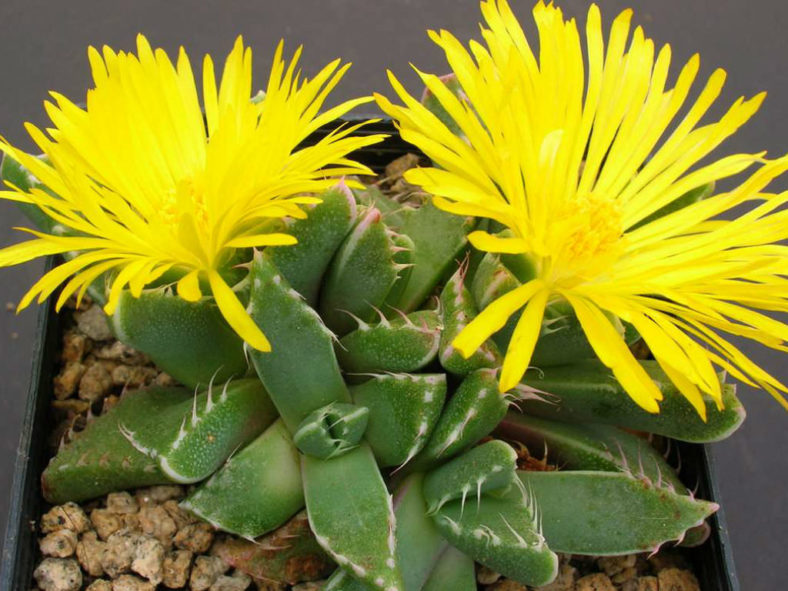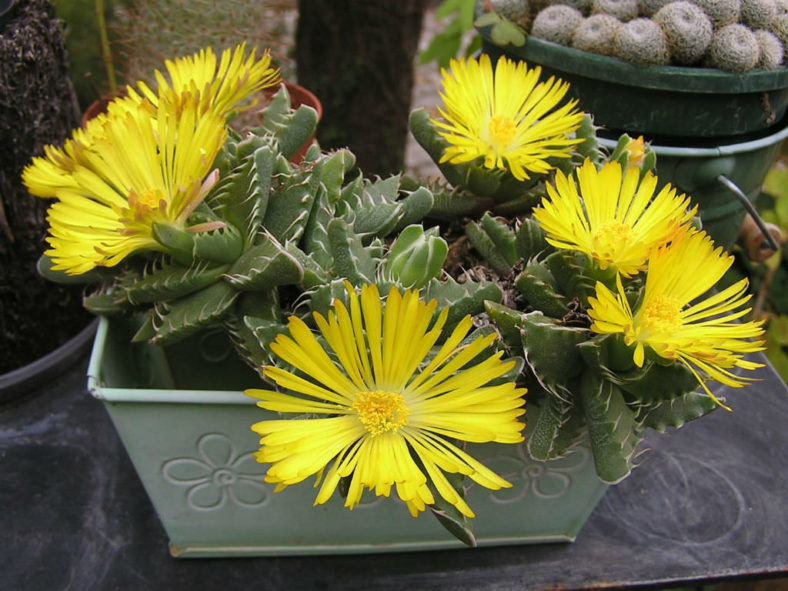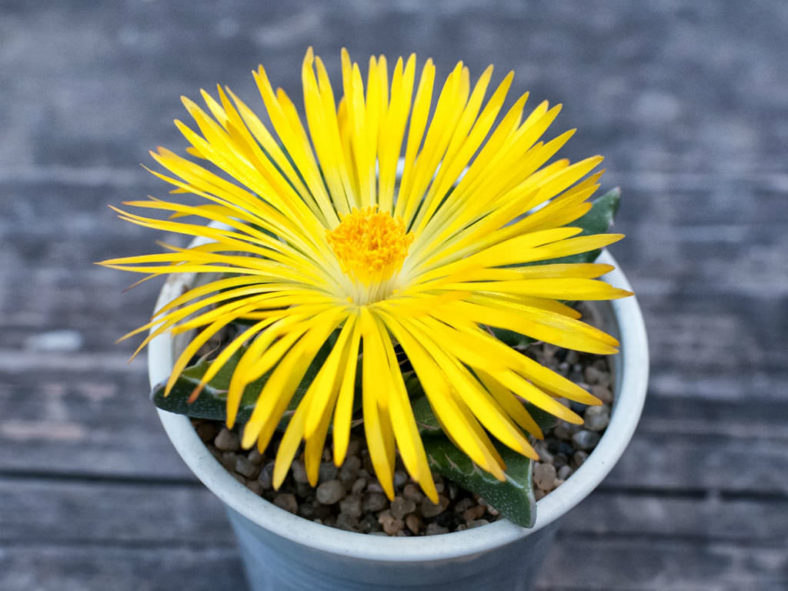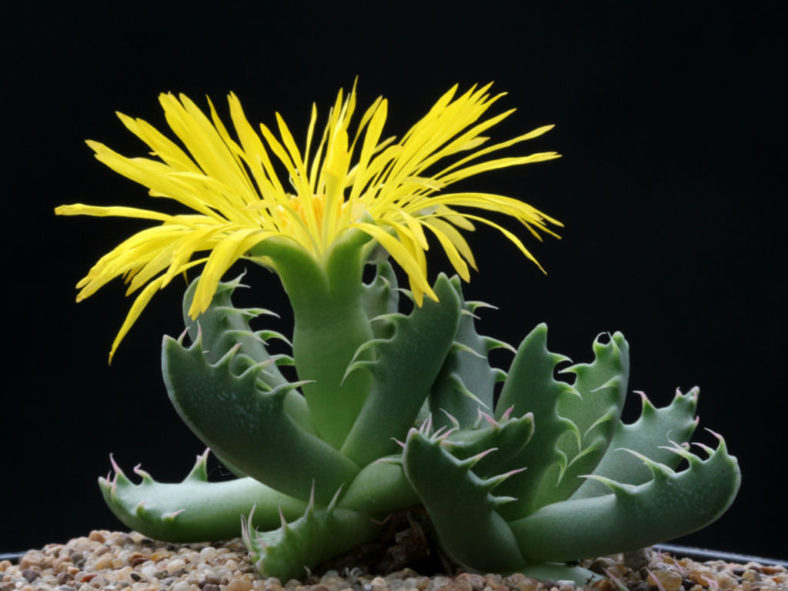Scientific Name
Faucaria felina (L.) Schwantes
Common Name(s)
Cat Chap, Cat Jaws, Tiger Jaws, Wolf Mouth Mesemb
Synonym(s)
Mesembryanthemum felinum, Mesembryanthemum ringens var. felina
Scientific Classification
Family: Aizoaceae
Subfamily: Ruschioideae
Tribe: Ruschieae
Genus: Faucaria
Etymology
The specific epithet "felina" (pronounced "fel-IN-uh") means "feline; of or pertaining to a cat" and refers to the tooth-like projections on the leaf margins, which resemble cat fangs.
Origin
Faucaria felina is native to South Africa.
Description
Faucaria felina is a small succulent plant that forms compact clumps of thick, fleshy, boat-shaped leaves with soft teeth along the margins. The leaves are dark green to grey-green, smooth, or have white dots and crystals on the outer walls. They can measure up to 3 inches (7.5 cm) in length and 1 inch (2.5 cm) in width.
The flowers are daisy-like, yellow to orange, or rarely white, and appear in late fall and winter, reaching a diameter of up to 2 inches (5 cm).

Hardiness
USDA hardiness zones 9b to 11b: from 25°F (-3.9°C) to 50°F (10°C).
How to Grow and Care
The various species make excellent pot subjects and have been cultivated in Europe for over 300 years. Some species, such as Faucaria tigrina, are quite hardy, while others can be prone to stem rot.
Faucarias are mostly spring and fall growers. They require good drainage, but with a bit of shade, they will do just fine, even in extreme heat. However, they will stop growing during this period and need water every few days. When they lack water, like many other mesembs, the stems die, and some rosettes are not connected to the roots by any living tissue. When found in time, the rosettes can be used as cuttings and kept in the shade in a barely moist medium until the temperature cools down in the fall.
They bloom for several months in the fall or the beginning of winter. The flowers open around midday and close in the late afternoon. They often don't open if the weather is cloudy or if they are in the shade.
See more at How to Grow and Care for Faucaria.
Links
- Back to genus Faucaria
- Succupedia: Browse succulents by Scientific Name, Common Name, Genus, Family, USDA Hardiness Zone, Origin, or cacti by Genus
Photo Gallery
Click on a photo to see a larger version.


